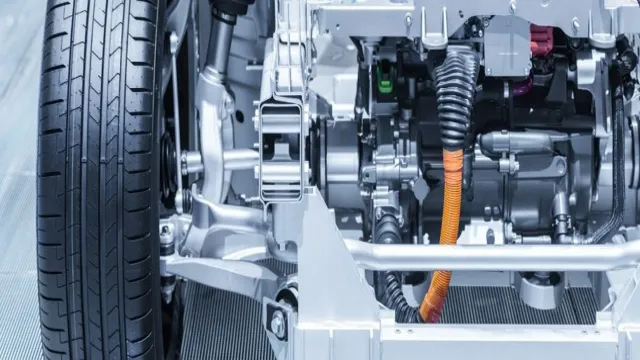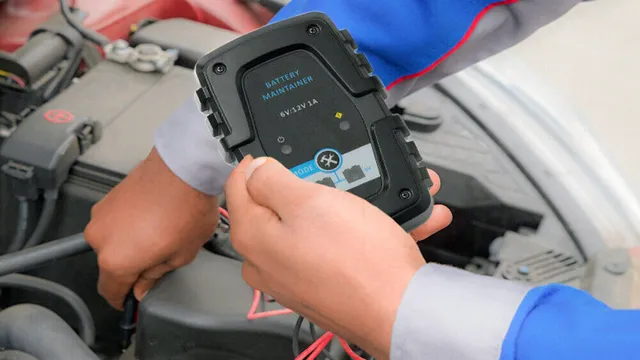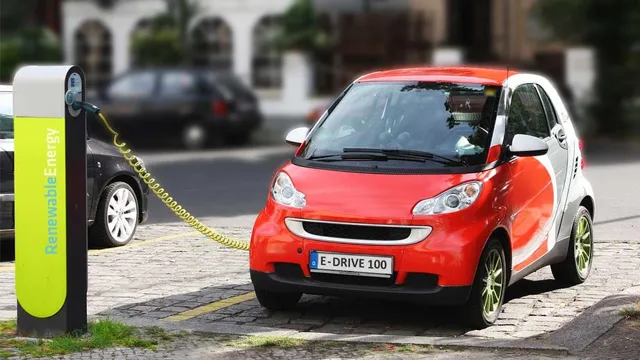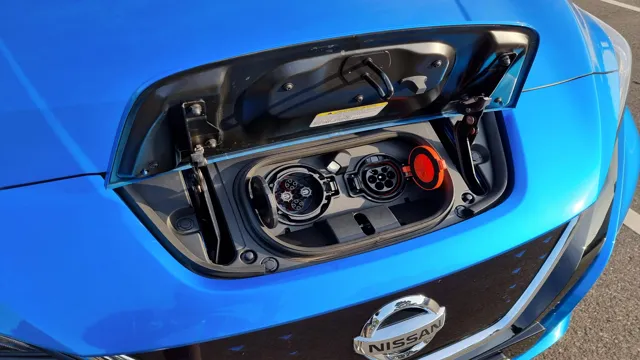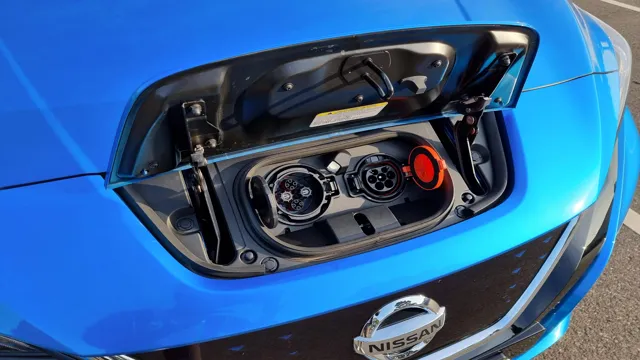Powering Up Your Ride: A Guide to Maintaining Your Electric Car for Maximum Performance
Electric cars have become increasingly popular in recent years, and for good reason. They are eco-friendly and can save you money on gas in the long run. However, like any vehicle, they require maintenance to perform at their best.
Maintaining an electric car can be a bit different than maintaining a traditional gas-powered car. In this blog post, we will provide you with tips and tricks for keeping your electric car in tip-top shape. From monitoring your battery health to maximizing efficiency, these tips will help extend the lifespan of your electric car and ensure that it runs smoothly for years to come.
So, if you’re an electric car owner or thinking about becoming one, keep reading to learn how to maintain your vehicle and keep it running like new.
Regular Maintenance
Maintaining an electric car is relatively easy, as it requires less maintenance than gas-powered cars. The first thing to keep in mind is to schedule regular maintenance for your car. Just like gas cars, electric cars also need their brakes, tires, and suspension checked and rotated periodically.
You should also check the coolant and change it as needed. Regular washing and detailing are also important to keep the car’s exterior clean, preventing corrosion from moisture and chemicals. In addition to this, battery packs also need to be maintained, and it’s important to understand the impact of temperature on the battery life.
You should make sure you keep the battery charged regularly and optimized the charging schedule. Finally, it’s important to check the manufacturer’s recommendations for maintenance, as different manufacturers may have slightly different requirements. Ultimately, keeping the car regularly maintained will ensure that it lasts longer, is more reliable, and operates at peak performance.
Scheduled Service Checkups
Regular maintenance is crucial for the longevity and safety of your vehicle. Scheduled service checkups are an excellent way to ensure that your car is in top shape. These regular checkups can help you identify any potential issues early on and prevent any serious problems from occurring in the future.
During a service checkup, your mechanic will check all vital components of your vehicle, including your brakes, battery, tires, and fluids. They will inspect for any wear and tear and replace any parts that appear damaged or worn. Not only will regular maintenance help keep your car running smoothly, but it can also save you money in the long run by preventing costly repairs.
Don’t neglect your vehicle’s health – schedule a regular service checkup today and enjoy the peace of mind that comes with driving a well-maintained vehicle.
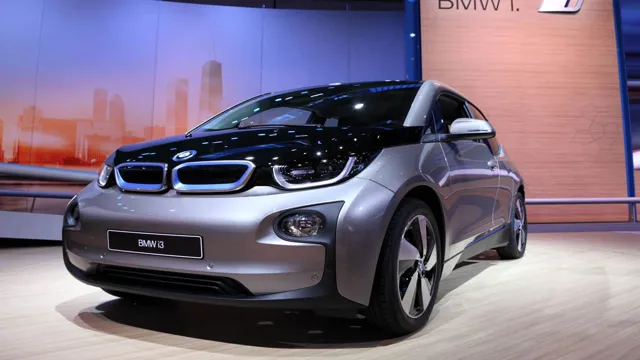
Battery Maintenance
If you want your battery to last longer, regular maintenance is key. One of the first things you should do is inspect your battery for any signs of damage or wear. If you notice any cracks or leaks, it’s time to replace your battery.
Next, check your connections to ensure that they’re clean and free of any corrosion. Corrosion can prevent your battery from charging properly and can ultimately lead to a dead battery. Another important step in battery maintenance is to keep it clean.
You can use a mild solution of baking soda and water to scrub away any dirt or grime that has built up on the surface of your battery. And finally, if you’re not using your battery for an extended period of time, it’s a good idea to charge it up once every three months or so. This will help prevent a buildup of sulfate on the battery plates, which can reduce the battery’s overall lifespan.
By following these simple maintenance tips, you can help ensure that your battery lasts as long as possible.
Charging & Storage Tips
Maintaining an electric car is not very expensive or complicated but requires slight behavioral changes. For instance, charging and storage practices are crucial elements of maintaining an electric vehicle. To ensure that your electric car’s battery serves you for an extended period, it’s essential to charge it correctly and use the correct charging equipment.
Ideally, it’s advisable to use your home’s charging equipment for daily charging, as it saves time and reduces costs. Moreover, avoiding charging the battery to its maximum capacity all the time is better for battery health. Similarly, storage poses a challenge as leaving an electric car inactive for extended periods affects performance.
It’s recommended to charge the battery fully and disconnect it before storing the electric vehicle. Making small changes to your charging and storage habits will ultimately go a long way in extending the longevity of your electric car.
Charging Practices
When it comes to charging your devices, there are a few best practices that can help prolong their lifespan and ensure optimal performance. First and foremost, it’s important to use the correct charger for your device, as using a mismatched charger can damage the battery. Additionally, it’s best to avoid letting your battery completely drain before recharging it, as this can also put unnecessary strain on the battery.
Instead, try to keep your devices charged between 20 and 80 percent to help extend their lifespan. When storing your devices for an extended period of time, it’s important to ensure they’re at least 50 percent charged, as batteries can lose their charge over time. By following these simple charging and storage tips, you can help keep your devices running smoothly for years to come.
Battery Storage Tips
When it comes to battery storage, there are a few tips you should keep in mind for both charging and storage. First and foremost, it’s important to use the charger that comes with your device or a manufacturer-approved replacement to ensure that your battery stays healthy. Avoid using cheap knock-off chargers, as they may not be compatible with your device and can lead to overcharging or undercharging your battery.
Additionally, it’s a good idea to avoid letting your battery drain completely before recharging, as this can also damage your battery over time. When storing your battery, it’s best to keep it in a cool, dry place and avoid exposing it to extreme temperatures or direct sunlight. By following these battery storage tips, you can help extend the life of your device’s battery and ensure that it continues to function properly.
Weather Considerations
When it comes to charging and storing your devices, weather conditions can play a big role in maintaining their lifespan. One important tip is to avoid charging your devices in extreme temperatures, such as under direct sunlight or in freezing temperatures. This can cause damage to the battery and decrease its overall lifespan.
Similarly, storing your devices in extreme temperatures can also damage the battery and cause it to hold less charge. To combat this, try to store your devices in a cool, dry place away from direct sunlight. Additionally, it’s important to avoid leaving your devices fully charged or completely drained for long periods of time.
This can also cause damage to the battery and lower its overall capacity. Instead, aim to keep your devices at around 40-80% charge to keep the battery healthy and extend its lifespan. By following these simple charging and storage tips, you can ensure that your devices stay in top condition, no matter the weather conditions.
Efficient Driving Habits
Electric cars are a great choice for those looking for a more sustainable and eco-friendly mode of transportation. However, like any car, electric cars also require maintenance in order to ensure that they run smoothly and efficiently. There are many ways to maintain an electric car, but one of the most important habits is efficient driving.
By driving at a consistent speed, avoiding sudden acceleration and hard braking, and using cruise control whenever possible, you can significantly extend the range of your electric car’s battery and improve its overall performance. In addition, make sure to keep your tires properly inflated and avoid carrying unnecessary weight in your car. These simple habits can not only help you save energy and reduce your environmental impact, but they can also save you money on fuel costs and extend the life of your electric car’s battery.
So the next time you’re behind the wheel of your electric car, remember to drive efficiently and do your part to help protect the planet.
Regenerative Braking
Regenerative braking is a crucial component of efficient driving habits. It’s a process that converts the kinetic energy of a vehicle when it brakes into electrical energy that can be stored and used to power the car’s battery. This means that the energy that would be lost during traditional braking is put to good use, making regenerative braking one of the most effective ways to increase a vehicle’s fuel efficiency.
The process is typically found in hybrid and electric vehicles, and it works by using an electric motor to slow the wheels down rather than just relying on brake pads. The result is a car that not only saves fuel but also offers a smoother and more comfortable driving experience. Plus, it helps reduce wear and tear on the braking system over time, making it a win-win situation for both the driver and the car.
So, if you want to make sure you’re driving as efficiently as possible, taking advantage of regenerative braking is a great place to start.
Energy-Saving Features
Efficient driving habits can significantly reduce your vehicle’s energy consumption and save you money on fuel costs. Simple habits like accelerating slowly, maintaining a steady speed, and avoiding sudden braking can reduce fuel consumption by up to 25%. It’s also crucial to avoid idling for prolonged periods as it uses up a lot of fuel, and switching off the engine when parked can save a considerable amount of energy.
Another essential tip is to plan your route before setting out and avoiding heavy traffic where possible. Rush-hour traffic and frequent stop-starts can significantly increase fuel consumption. Finally, keeping your car’s tires inflated to the recommended pressure can reduce rolling resistance, resulting in improved fuel efficiency.
By adopting these simple driving habits, you can significantly reduce your carbon footprint and improve your vehicle’s fuel economy.
Final Thoughts
Maintaining an electric car is a bit different from maintaining a traditional car, but it’s not necessarily more difficult. The biggest difference is probably the battery, which needs to be charged regularly and replaced eventually, but these days, electric car batteries can last for many years. Other than that, electric cars have fewer moving parts and don’t require as much maintenance as cars with internal combustion engines.
For example, electric cars don’t need oil changes, spark plug replacements, or belt replacements. That being said, there are still things electric car owners need to do to keep their vehicles in top condition. They should make sure to keep the tires properly inflated, get regular brake checks, and have the cooling system serviced periodically.
All in all, the maintenance of electric cars is fairly straightforward and shouldn’t be a major concern for prospective buyers.
Conclusion
In conclusion, maintaining an electric car is a lot like maintaining a healthy diet – it requires regular attention and effort, but the payoff is well worth it. From keeping the battery charged and updated, to scheduling routine check-ups with a qualified mechanic, electric cars require a bit more TLC than their gas-guzzling counterparts. However, the long-term benefits of reduced emissions, lower fuel costs, and fewer maintenance issues make the investment in an electric car an increasingly attractive option for eco-conscious consumers.
In short, owning an electric car is a commitment to a cleaner, more sustainable future – and who wouldn’t want to be a part of that?”
FAQs
What are some basic maintenance tasks for electric cars?
Basic maintenance tasks for electric cars include keeping the battery charged, monitoring tire pressure, and checking fluid levels.
How often should the battery be serviced in an electric car?
Electric car batteries typically require little to no maintenance, but it’s recommended to have them inspected every 6-12 months by a professional.
Can electric car owners perform maintenance tasks themselves?
Yes, many basic maintenance tasks for electric cars can be performed by the owner, such as checking and replacing the air filter, cabin filter, and windshield wipers.
How does maintenance for an electric car compare to maintenance for a gas-powered car?
Electric cars generally require less maintenance than gas-powered cars since they have fewer moving parts. However, they still require regular upkeep like any other vehicle, such as brake inspections and fluid level checks.

